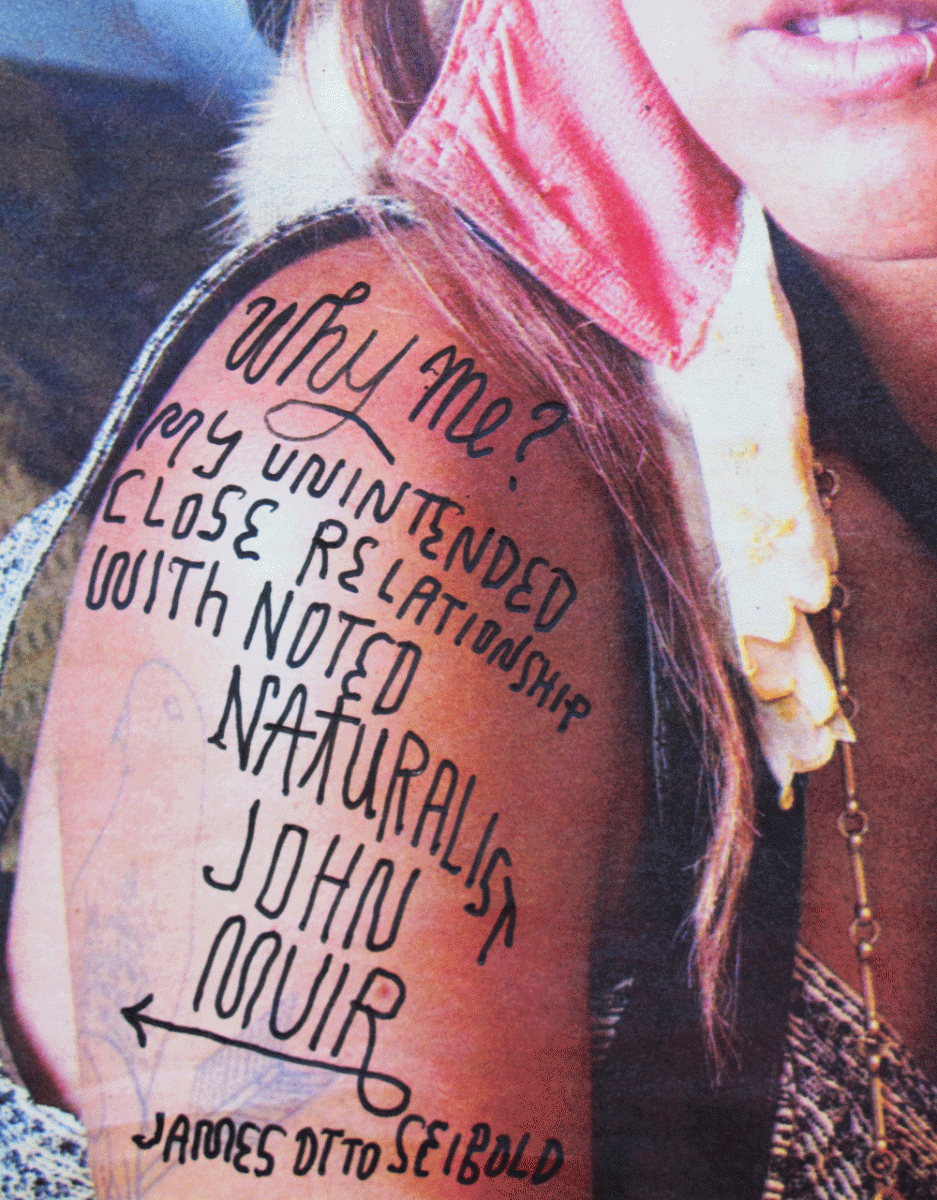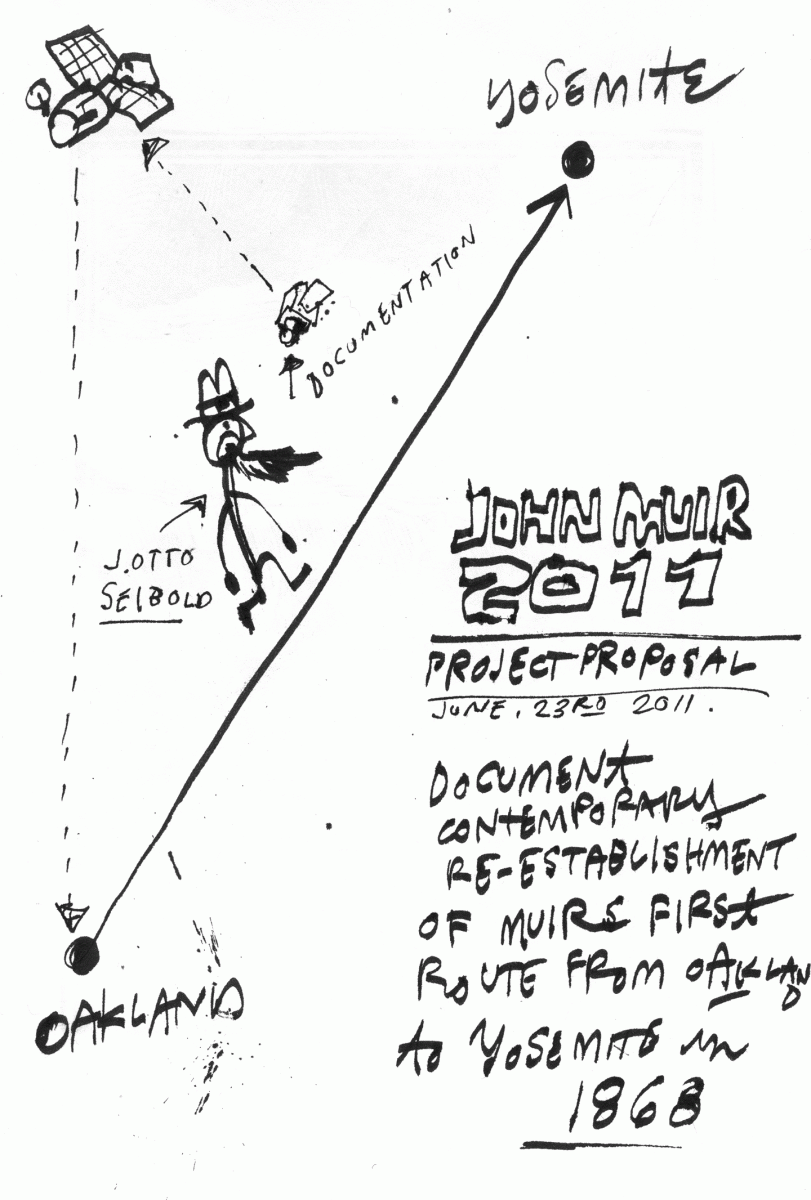
Why Me?
I've been thinking about how to frame the ways that my personal biography has overlapped with that of John Muir, the mythologized wilderness figure. It's not only that I grew up amongst Muir's apricot trees in the middle of Muir's orchard in Martinez, California.
.jpg)
This is the result of smashing digital lettershapes into soft paper with plates of metal... bringing brutal back!
Back then, I remember coming across a penny glued to a piece of cardboard. Printed on the cardboard were all sorts of oddball connections between Abraham Lincoln and John F. Kennedy—information about their biographies, random presidential facts, and lesser-known items like: Kennedy was riding in a Lincoln automobile, and Lincoln rode a horse named Kennedy!

The cover of the East Bay Express was all I had as a notepad...
That's how it was with John Muir and me.
My home was situated in John Muir's former commercial fruit operation. Agriculture became subdivision and my bedroom was midway between Muir's old home and where he lay in the ground. Muir was unavoidable during my childhood (Muir Motel, Muir Executive Center, Muir Woods), but despite the deluge, I was generally oblivious.
In the 1960s, Muir had not yet become the sanitized hero and icon my children would encounter in their grade school curriculum.
Like Muir, my father was an immigrant to the United States who relied on the old country practices of hard work and brutal beatings. So, like Muir, I turned to nature as a place of escape and embrace. In fact, I often wandered the Alhambra Creek in a bend that curved right past the gravesite of John Muir, though it wasn't until adulthood that I realized I had done so.
Disappearing into the creek was my primary solace back then. I'd head off in the direction of school, but take a sharp turn after crossing a footbridge over the creek, and there my day would unfold. It was a childhood version of Muir's trajectory—escaping the pressures of "society" through my devotion to nature. I rarely encountered anyone else at the creek. I would sit as still as possible and allow the landscape to settle into its rhythm. I would dig through mud and piles of tree branches stacked by storm runoff. I considered my findings about frogs and licorice plants to have scientific integrity.

My initial proposal, written in a stolen John Muir book.
My life in Martinez was that of a social outsider. Assimilation was not a concern at home. Instead, my family indulged in a mini-reconstruction of Germany, as imagined by the homesick immigrant. I would return to school on Mondays assured that not a soul suspected I spent the weekend in lederhosen selling pretzels off a stick to drunk adults! The same studious approach I used to understand the ecology of the creek served me well in trying to understand how to be American.
John Muir entered adulthood in the wake of the Civil War. For me, it was the Vietnam War. He refined industrial efficiency in manufacturing; I did technical drawing for toxic companies. He walked away from traditional career prospects to explore the world free of capital constraints. So did I. We both became unaccredited experts in fields of personal consignment, gaining notoriety through publishing.
How to balance humanity's demands with the spiritual truth of nature? To be wild… to have the time to sit and stay with something until curiosity becomes contemplation… to wander and wonder. Who knows, John Muir may have had a horse named James Otto Seibold.
Projects








